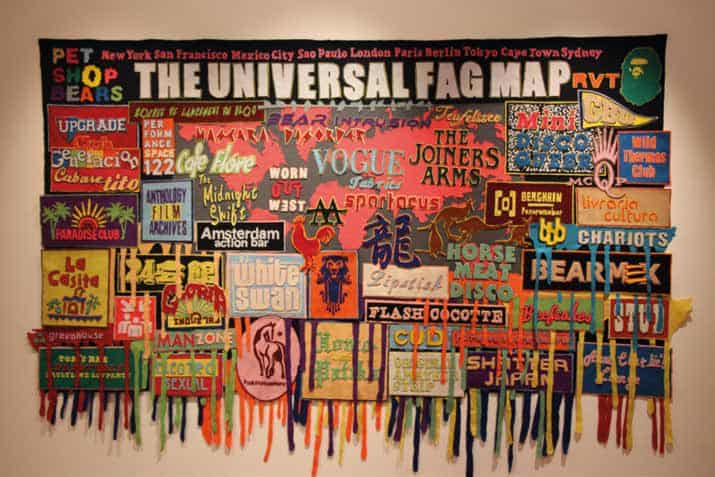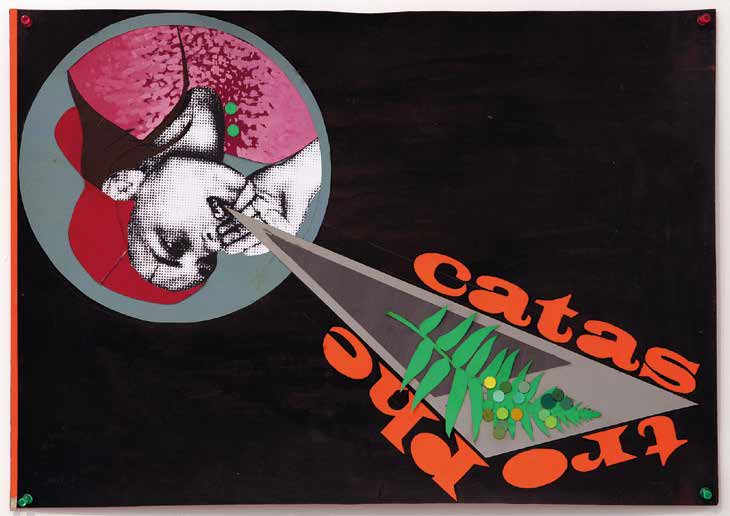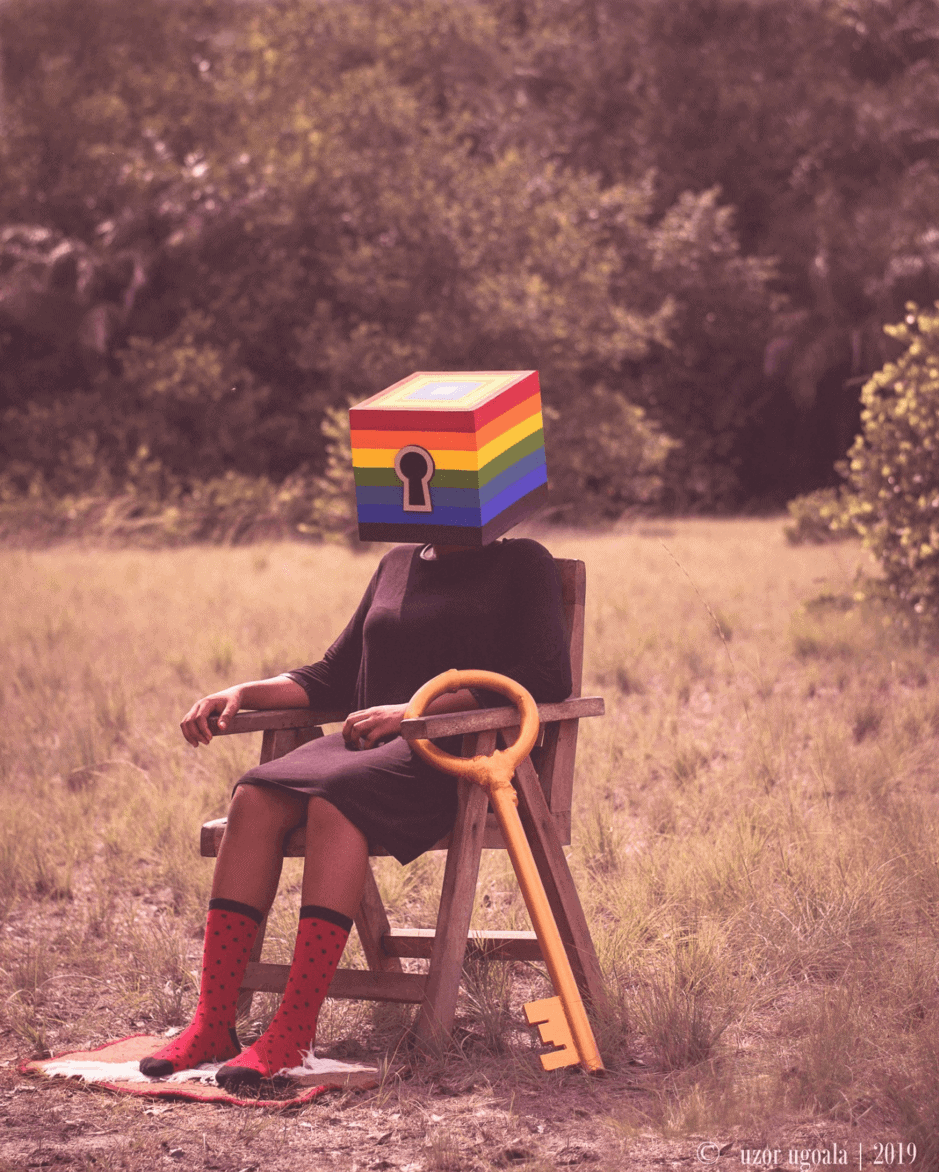Art South Africa Volume 12: Issue 03

When Ed Ruscha began to publish graphic design work in the 1960s, it was done under the moniker of “Eddie Russia”1, a gesture which typifies the sort of self-conscious aversion to being associated with design that has historically been held by artists. Reservations are usually centred on the perception that due to the paid fulfilment of some form of prescribed function, design exists as the “sell-out” commercial cousin of art. Not without irony, it is due to this very perception that artists have on many occasions shifted to design as a creative means of supplementing their income. The converse, “Well, design is my passion but I produce art to make ends meet,” isn’t quite commonplace just yet. Beyond any notion of commerce however, many artists are increasingly finding dual endeavours in art and design to be beneficial to their overall practice, forming an interrelated dialogue that informs their output in both spheres. This article will discuss three practicing Cape Town-based artists who are successfully negotiating the fluctuating tightrope between producing art and simultaneously working with design.

One artist who has fully embraced working between the two is recent Michaelis MFA graduate Jody Paulsen. Inspired by artists such as Yayoi Kusama, Tracey Emin and Sarah Lucas, Paulsen has been making a name for himself of late with his large-scale felt collages and his ongoing collaboration with fashion designer Keith Henning for Henning’s Adriaan Kuiters label. Paulsen’s working relationship with Adriaan Kuiters began in early 2013 when commissioned works by Julia Rosa Clark, Georgina Gratrix and himself were printed onto fabric and used to produce a range of limited edition men’s and women’s shirts. Soon thereafter the association grew to the point where Paulsen took five weeks off from working on his MFA exhibition to collaborate on the Adriaan Kuiters range which debuted as part of the Mercedes Benz Cape Town Fashion Week in August 2013. In a spectacular coup, the fashion show took place in the Iziko South African National Gallery, literally inserting art and fashion into the same space. Taking full advantage of the nature of the space, works by artists such as Georgina Gratrix and Athi Patra Ruga were hung in the room to dialogue with the main event. Paulsen embraces the relationship between art and fashion design with open arms, aiming to nurture a sustained dialogue between the two in his work. On the one hand, conducting a fashion show in the national gallery ensured that the line was shown in a far richer context than the Cape Town International Convention Centre (where all but one of the other Fashion Week entries were unveiled). Conversely, the functionality of clothing goes a long way towards “keeping art grounded”. As the artist asserts, “It feels more human in a way. Every day, no matter who you are, you’re going to open your wardrobe, look at your clothes and decide what to wear. It feels like you’re making something useful. Sometimes art can be so heady and with clothing design it feels like it’s something more grounded, something for people.” Currently working on felt collages for BRUNDYN+’s booth at the upcoming Cape Town Art Fair in addition to a new line with Adriaan Kuiters for the Design Indaba, Paulsen looks set to continue along this parallel trajectory.

For sculptor Daniella Mooney, a problem present in both fields lies in the attitude towards craftsmanship and the process of producing the work from nothing. The artist notes that “so often within sculpture there is a trend of outsourcing the production of the work, which on some intrinsic level takes away from the artist’s connection to the process”. Decidedly hands-on in her approach, the attention to detail in the construction has become a hallmark of Mooney’s work. Perhaps as a consequence of this attitude, she has found her work embraced by the design sphere without intentionally seeking it out. As a result of the organisers purchasing work from her 2011 exhibition ‘Maybe Your Magic is Working’ at Cape Town’s Whatiftheworld gallery, Mooney was invited to contribute a new piece to Southern Guild’s annual design showcase in 2012. The brief was to produce a “functional object”, a notion that the artist elected to interrogate and challenge with Parquetry (2012). Incorporating a functional aspect in the form of the chair, the work simultaneously throws a playful whittling knife into the works with the parquetry draped over the front of it. Here Mooney light-heartedly dares the viewer to subvert the hallowed “look but don’t touch” impression of the art object and take a seat. Despite the end product being viewed by the artist as “purely sculptural”, the work earned Mooney the cover of Business Day’s Wanted supplement in August 2012 under the heading “Design Champions: The Hottest Local Talent”. Sufficiently impressed, Southern Guild invited her to contribute again the following year. Furthering her quest to expand her practical skillset, Mooney collaborated with Yogide Beer, a potter specialising in crafting large-scale wheel thrown pots. The end result, The Gateway to the Invisible Must Be Visible (2013), was a freestanding catenary arch made from porcelain and granite. Strongly imbued with Mooney’s chimerical affinity for nature, Gateway achieved the dual effect of pushing further into design territory whilst maintaining the signature traits of her practice. It would sit just as comfortably in an art exhibition as it did alongside the work of some of the country’s leading designers at the newly launched Museum of African Design (MOAD) in Johannesburg’s Maboneng Precinct.

A multifaceted artist working in diverse media, Julia Rosa Clark has produced extensive design output throughout her career, ranging from set design and prop manufacture to book covers, illustrations, posters and industrial design 49 with her Luminary Lights brand. Clark was also responsible for the packaging of iconic South African Hip Hop troupe Moodphase5ive’s album Steady On (2000) as well as contributing visual design to The Constructus Corporation; a
pre-MaxNormal.TV and Die Antwoord project from Waddy Jones (Ninja) also featuring Sibot, Felix Laband, Markus Wormstorm and Anri Du Toit (Yolandi Visser). Having worked on projects as varied as this, it was inevitable that design elements would come through strongly in her art practice, especially evident in works such as the Modernist Poster Series (2007) and the accomplished navigation of colour, collage and space that defined her trilogy of installation exhibitions ‘Hypocrite’s Lament’ (2007), ‘Fever Jubilee’(2007/8) and ‘Paradise Apparatus’(2010). Importantly, these design aesthetic sensibilities in Clark’s work are always imbued with a selfcritical sense of analysis. Pressed as to where she locates the art/design divide, the artist asserts that “in a traditional sense, the distinction for me lies in the fact that art is about posing questions, while design is fundamentally about finding answers or solving a problem”. Actively resisting any form of thematic finality or conclusion, posing questions is something that Clark’s works are particularly adept at. Often appearing exuberant at first, the works prove concise and meticulously arranged upon closer inspection. There is an organised and considered economy of excess in Clark’s art work that somehow fluctuates between being cluttered to the point of immersion and yet perfectly balanced. As part of the team responsible for the themed holiday window displays, Clark is currently applying her astute design sensibilities to the role of visual merchandise design manager at Woolworths, in addition to planning her next solo exhibition for Whatiftheworld.
pre-MaxNormal.TV and Die Antwoord project from Waddy Jones (Ninja) also featuring Sibot, Felix Laband, Markus Wormstorm and Anri Du Toit (Yolandi Visser). Having worked on projects as varied as this, it was inevitable that design elements would come through strongly in her art practice, especially evident in works such as the Modernist Poster Series (2007) and the accomplished navigation of colour, collage and space that defined her trilogy of installation exhibitions ‘Hypocrite’s Lament’ (2007), ‘Fever Jubilee’(2007/8) and ‘Paradise Apparatus’(2010). Importantly, these design aesthetic sensibilities in Clark’s work are always imbued with a selfcritical sense of analysis. Pressed as to where she locates the art/design divide, the artist asserts that “in a traditional sense, the distinction for me lies in the fact that art is about posing questions, while design is fundamentally about finding answers or solving a problem”. Actively resisting any form of thematic finality or conclusion, posing questions is something that Clark’s works are particularly adept at. Often appearing exuberant at first, the works prove concise and meticulously arranged upon closer inspection. There is an organised and considered economy of excess in Clark’s art work that somehow fluctuates between being cluttered to the point of immersion and yet perfectly balanced. As part of the team responsible for the themed holiday window displays, Clark is currently applying her astute design sensibilities to the role of visual merchandise design manager at Woolworths, in addition to planning her next solo exhibition for Whatiftheworld.
1. Coles, A. 2005. “On Art’s Romance with Design”. in Design Issues. Vol
21.3, Summer 2005. 19.
21.3, Summer 2005. 19.
Tim Leibbrandt is a Cape Town-based writer, curator and musician.



